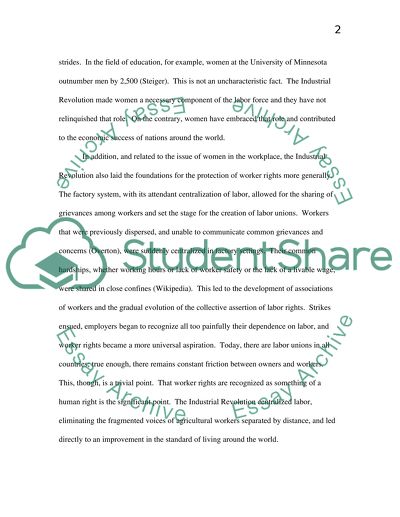The Industrial Revolution: Creating Opportunities for Women and for Case Study. Retrieved from https://studentshare.org/history/1532793-industrial-revolution-high-school-essay
The Industrial Revolution: Creating Opportunities for Women and for Case Study. https://studentshare.org/history/1532793-industrial-revolution-high-school-essay.


